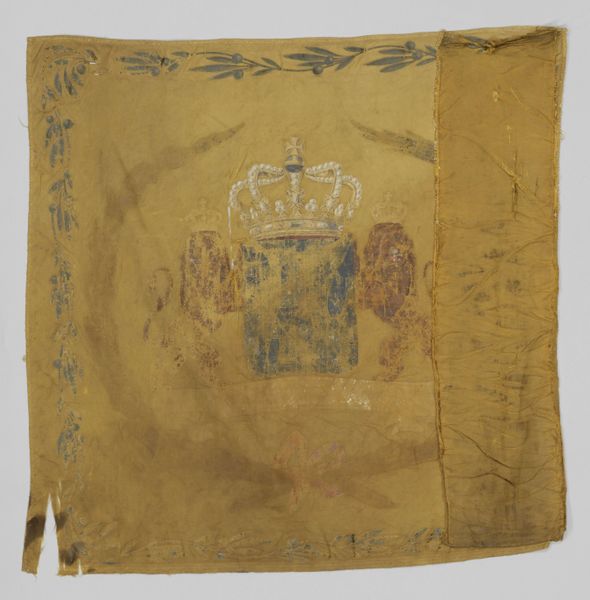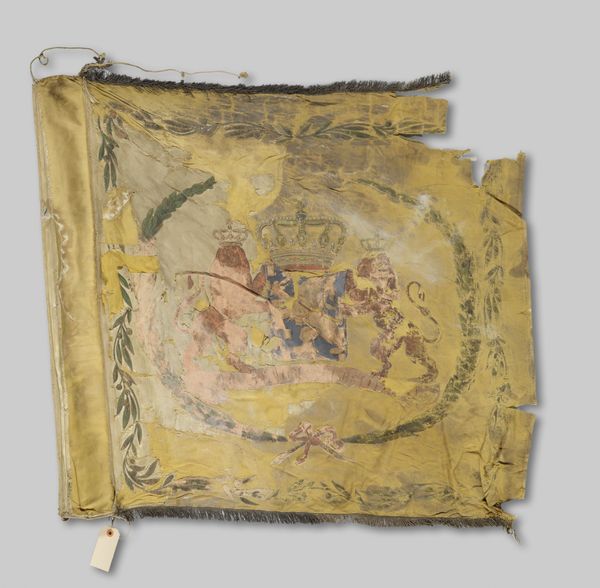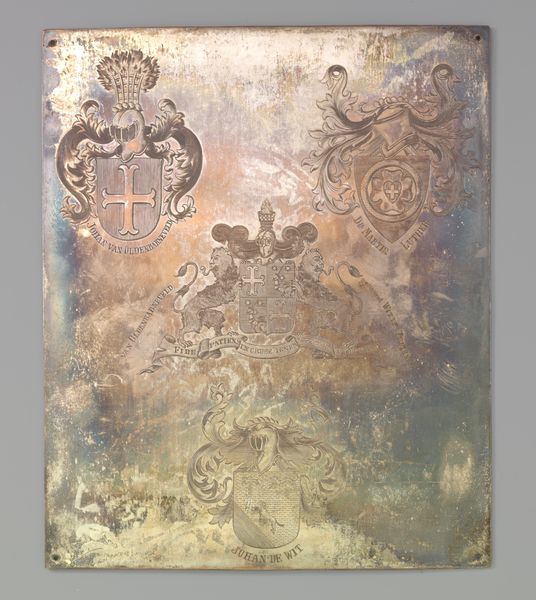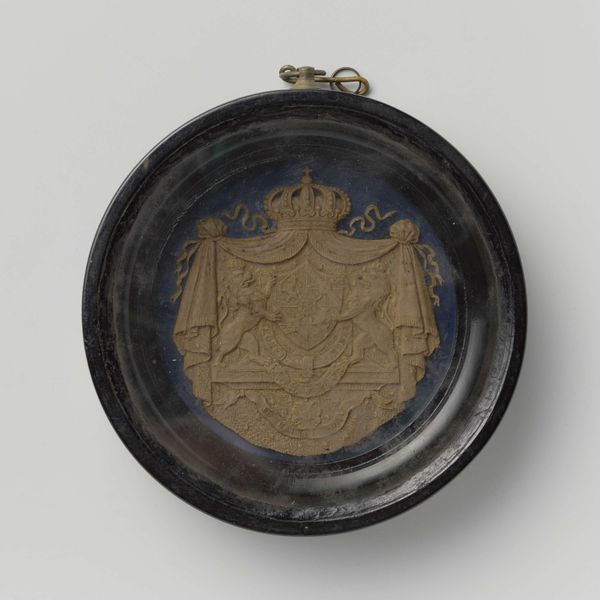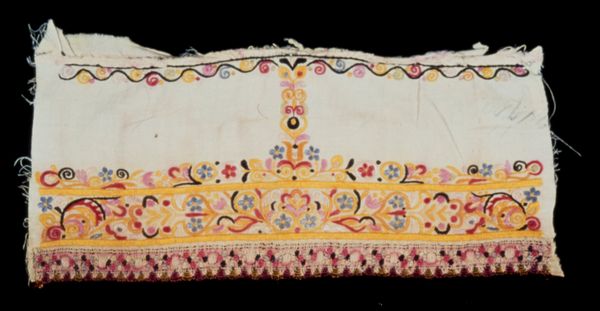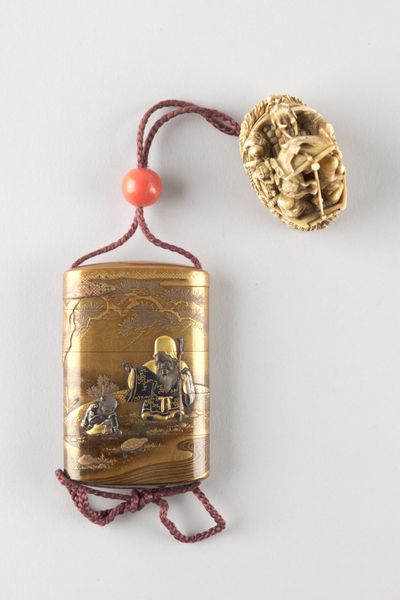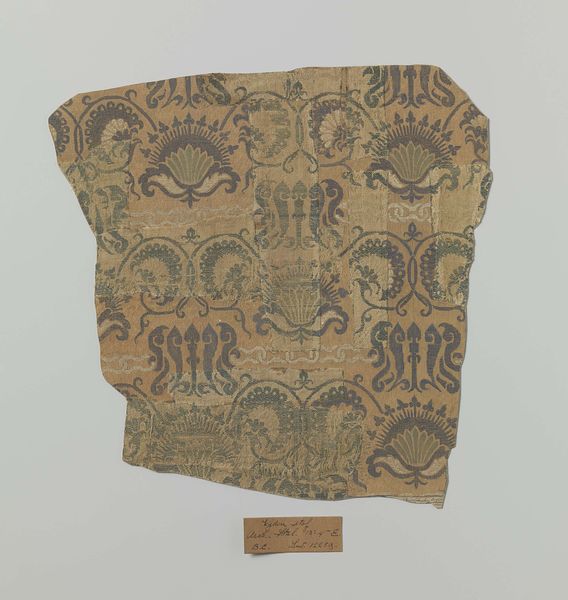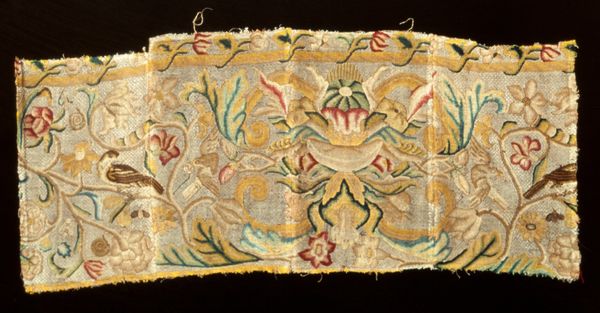
mixed-media, painting, textile
#
mixed-media
#
painting
#
landscape
#
textile
#
history-painting
#
academic-art
Dimensions: height 90 cm, width 62 cm
Copyright: Rijks Museum: Open Domain
Editor: Here we have what’s left of the “Pennant of the Fifth Infantry Division” from between 1846 and 1899, held in the Rijksmuseum and attributed to Jan Willem Pieneman. You can see it’s created with mixed media including textile and paint. It really strikes me as both grand and tragic, seeing this tattered piece of history. What’s your interpretation of this artwork? Curator: Well, my dear, looking at this fragment, it whispers stories, doesn't it? Forget polished portraits of victorious generals! This is the soul of the forgotten soldier, isn't it? Imagine, the silks shimmering in the sun, the regiment marching beneath it... Now, time and moths have conspired. Look at the colours, faded like old memories. The symbolism of the Dutch lion and crown speak of loyalty and power. It makes me wonder, doesn't it, what this flag witnessed? Did it see glory? Or just mud, blood, and fear? Editor: That’s quite moving! It’s strange to think of an object as representing individual stories. So, the damage actually *adds* to its meaning? Curator: Precisely! Think of it like a face etched with wrinkles; each line tells a tale. This isn't just an object; it's a witness. Do you see the olive branches painted on its edges? A symbol of peace that's ironically framing something built for conflict, which adds to the layers here. Isn’t it fascinating how something intended to inspire courage has ended up reminding us of mortality and fragility? Editor: I never would have considered the olive branches as ironic; it’s interesting to have a complete change in perspective. I'll certainly see historical objects in a new light after this. Curator: That's the beauty of it, isn't it? To find unexpected stories in the dust of yesterday, turning forgotten scraps into something potent, and sometimes, even beautiful.
Comments
No comments
Be the first to comment and join the conversation on the ultimate creative platform.
